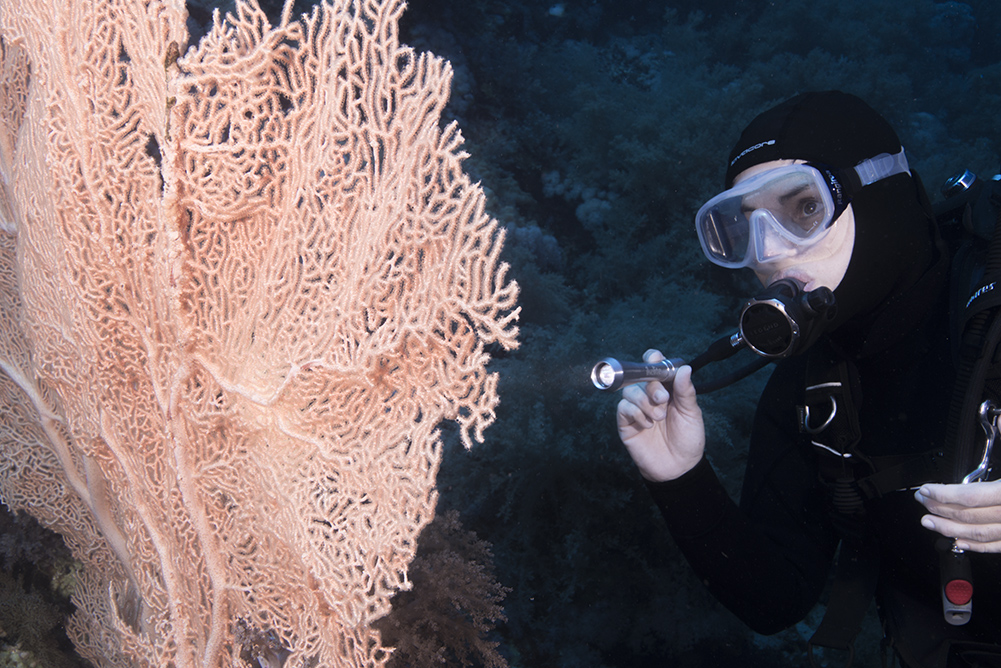 Divers and underwater photographers have a bit of a soft spot for Oxycirrhites typus, the Long Nose Hawkfish. Any fish that has its own hand signal (a gesture with one hand, reaching away from the face to suggest a long nose) has clearly ‘arrived’. But why are they so popular?
Divers and underwater photographers have a bit of a soft spot for Oxycirrhites typus, the Long Nose Hawkfish. Any fish that has its own hand signal (a gesture with one hand, reaching away from the face to suggest a long nose) has clearly ‘arrived’. But why are they so popular?
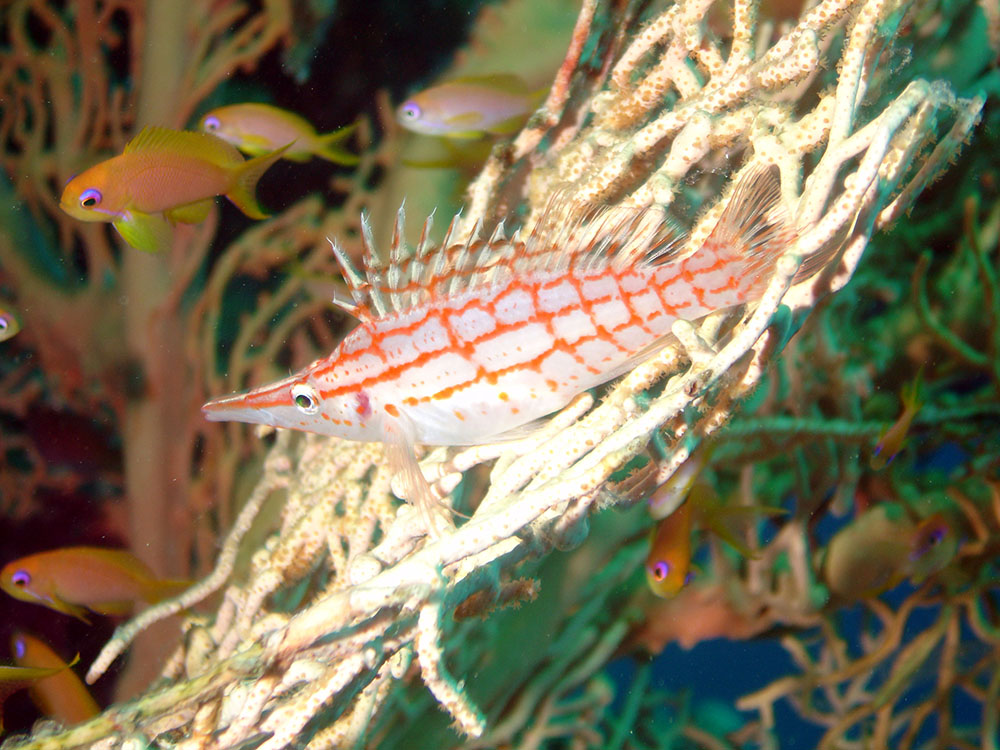 O. typus is a fish with interesting and unique coloration and patternation that only makes sense when you see it resting in its natural habitat, in this case amidst the impressive, net-like structure of Anella mollis, the Giant Sea Fan from the Western Pacific, and in this case from the Red Sea. It has quite a bit of character, and feeds on small crustaceans and zooplankton.
O. typus is a fish with interesting and unique coloration and patternation that only makes sense when you see it resting in its natural habitat, in this case amidst the impressive, net-like structure of Anella mollis, the Giant Sea Fan from the Western Pacific, and in this case from the Red Sea. It has quite a bit of character, and feeds on small crustaceans and zooplankton.
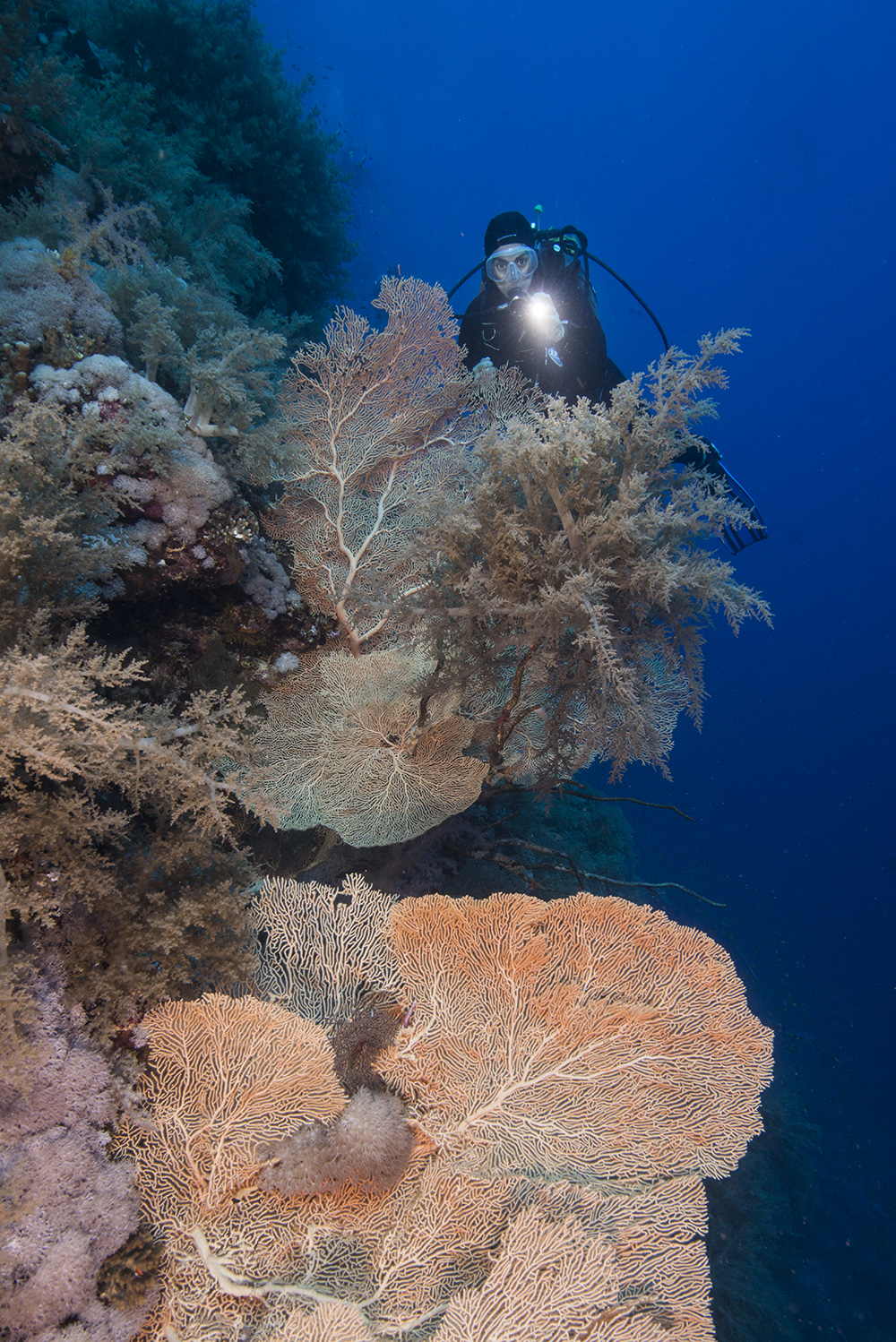 These sea fans are amazing filter feeders, and tend to be found in deeper waters; I seem to encounter the best ones at around thirty to forty meters. Here they grow at right angles to the current and offer shelter for Hawkfish and other animals, and on occasion other filter feeders such as feather stars.
These sea fans are amazing filter feeders, and tend to be found in deeper waters; I seem to encounter the best ones at around thirty to forty meters. Here they grow at right angles to the current and offer shelter for Hawkfish and other animals, and on occasion other filter feeders such as feather stars.
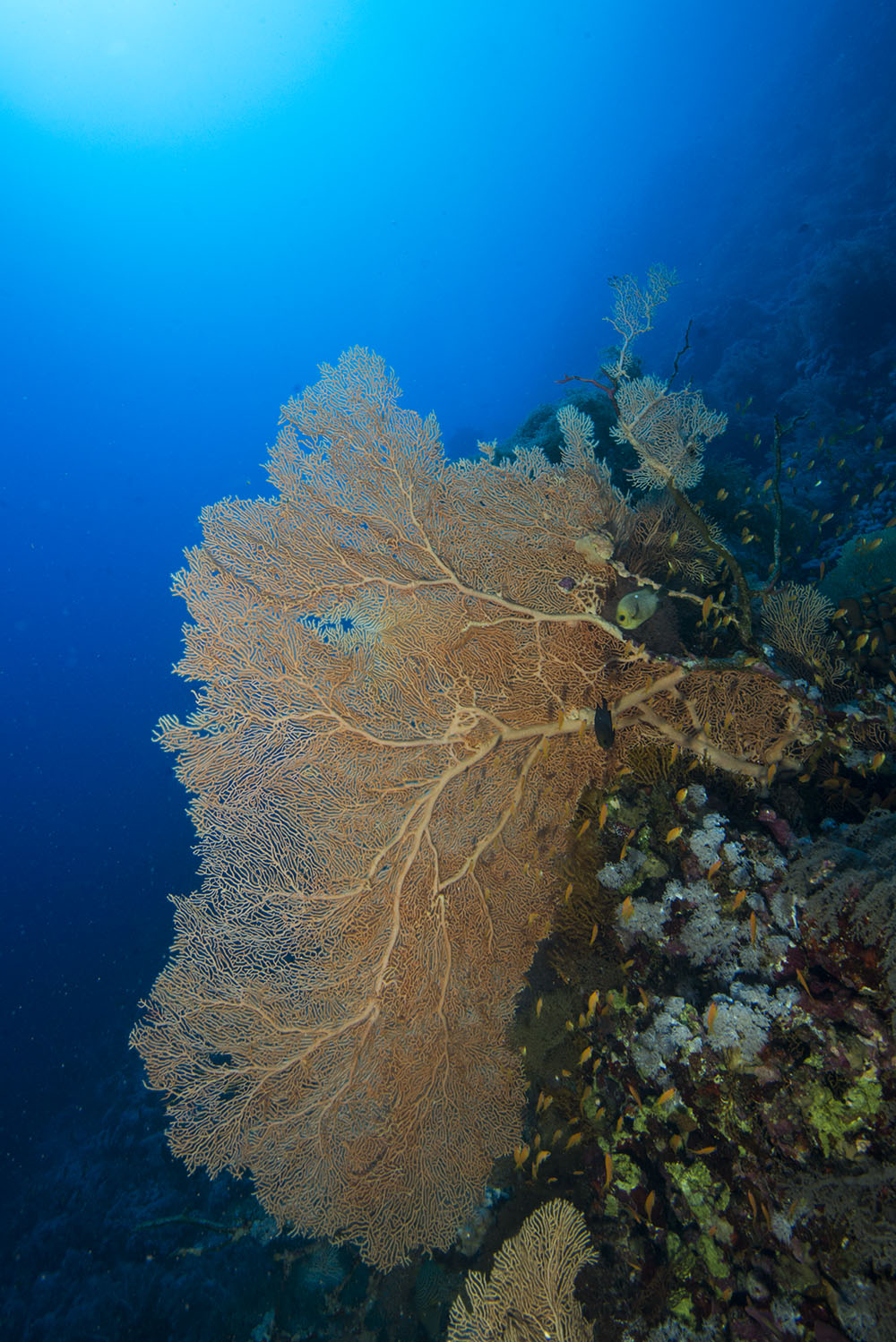 I have written posts about these species before, but what I was never able to do was offer any sense of scale to illustrate just how big these gorgonians can be. So, thanks a million to my buddy, whom I persuaded to pretend to be on a ‘Long Nose Hawkfish hunt’ while I took pictures.
I have written posts about these species before, but what I was never able to do was offer any sense of scale to illustrate just how big these gorgonians can be. So, thanks a million to my buddy, whom I persuaded to pretend to be on a ‘Long Nose Hawkfish hunt’ while I took pictures.
I suspect that their popularity with divers is not their intrinsic interest, but that dive guides over the years have passed on to each other the need to point out interesting fish and marine life, and if you are drawing attention to one large animal, it makes sense to point out the wee fish living within it.
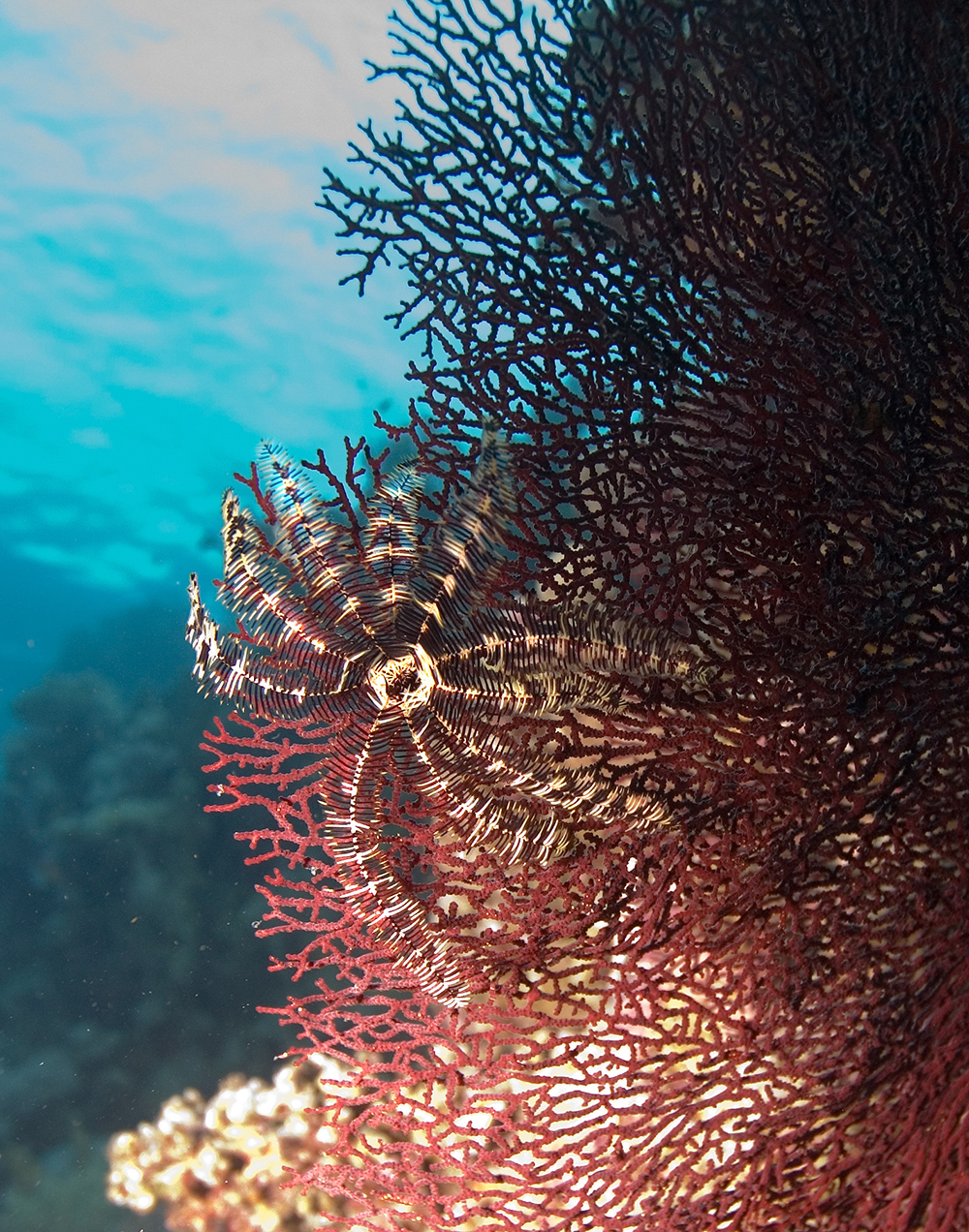 Dive guides also like to suggest we look for Stone Fish. They too have a signal: you pretend to smoke a joint! Maybe it just comes down to hand signals – if there is one, they’ll use it!
Dive guides also like to suggest we look for Stone Fish. They too have a signal: you pretend to smoke a joint! Maybe it just comes down to hand signals – if there is one, they’ll use it!










0 Comments